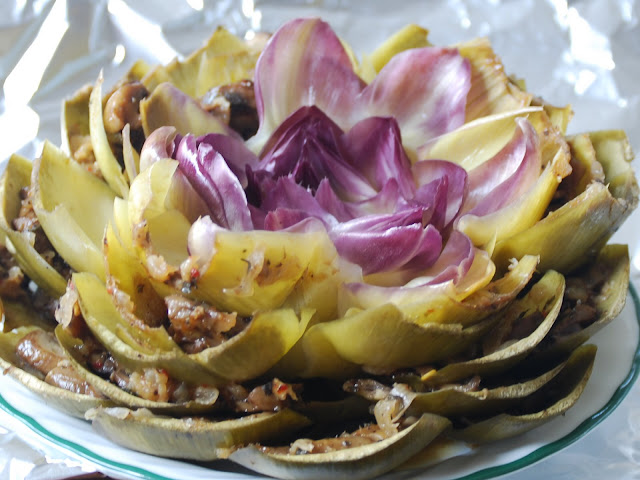A staple on Indian dinner tables that goes with pretty much every curry or simply spiced yogurt!
Ingredients needed:
Begin with mixing Atta with salt in a mixing bowl. Make a well in the center and add water. Mix well by adding more water or flour to get a consistency that is not to tough or too sticky. Cover and keep aside for about 30 minutes. Knead the dough with clean hands for 4 - 5 minutes.


Heat (on medium-high) and grease a griddle (or tava) lightly, place the flatten chapati. Dot with few drops of oil on the edges and on top. Once you see the air bubble expanding to most of the chapati, turn it so the other side can be cooked. Adjust heat so the chapati do not get burned.
Repeat flattening and cooking with all the quarter circles. Serve warm with any curry or spiced yogurt.

Ingredients needed:
- Atta (available in Indian grocery stores, can be substituted with whole-wheat powder)
- Salt to taste
- Oil for shallow frying
Begin with mixing Atta with salt in a mixing bowl. Make a well in the center and add water. Mix well by adding more water or flour to get a consistency that is not to tough or too sticky. Cover and keep aside for about 30 minutes. Knead the dough with clean hands for 4 - 5 minutes.

Make medium-large lemon sized balls, flatten them round (you can flatten the balls on a surface dusted with flour or basted with oil). Rub a few drops of oil to cover the surface of the round, fold it to half and fold it again to form quarter circle. Make these quarter circles with rest of the dough, keep them aside either dusted or oiled so they do not stick to each other.
Take one of the quarter circles and flatten out evenly taking care - by dusting or oiling- so that it will not stick to the surface.

Heat (on medium-high) and grease a griddle (or tava) lightly, place the flatten chapati. Dot with few drops of oil on the edges and on top. Once you see the air bubble expanding to most of the chapati, turn it so the other side can be cooked. Adjust heat so the chapati do not get burned.
Repeat flattening and cooking with all the quarter circles. Serve warm with any curry or spiced yogurt.

















































